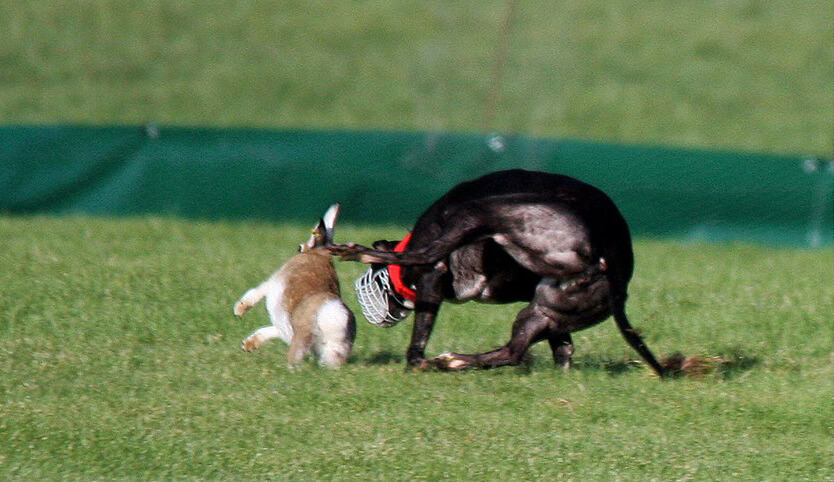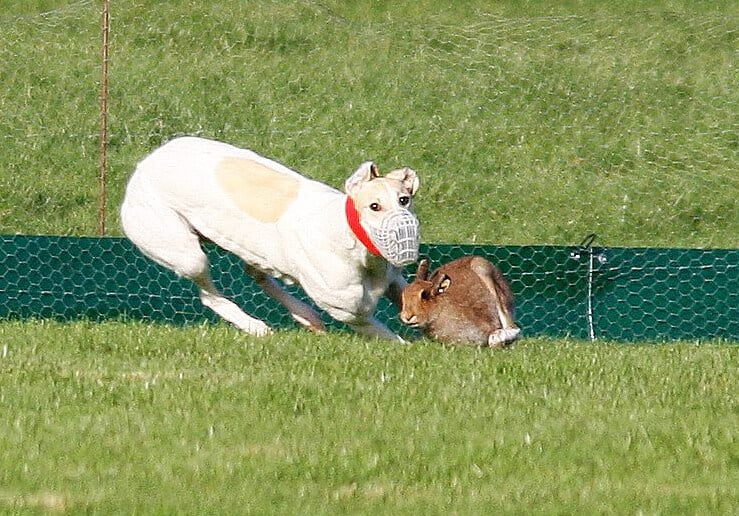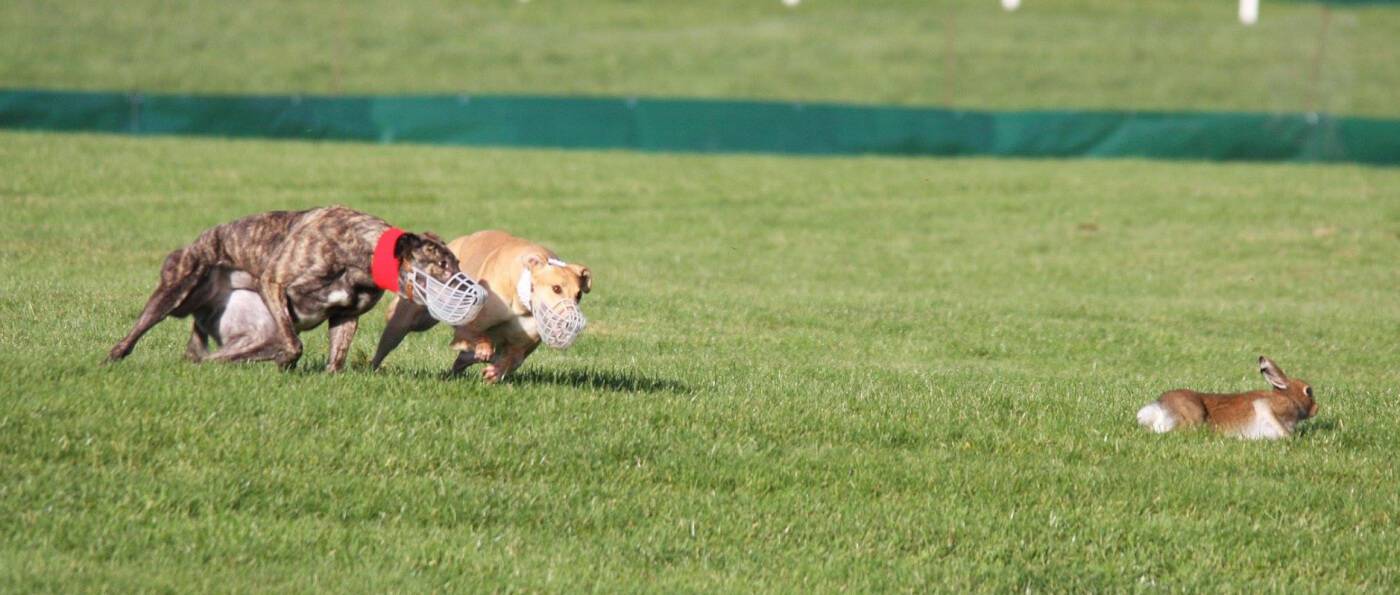It seems inconceivable that in 2020, it’s still legal to go out into the Irish countryside with nets and boxes to catch hares. This part is stressful and terrifying enough for these sensitive, solitary animals – and it’s just the beginning.
Once they’ve been caught, they’re tattooed, spray-painted, or micro chipped so that they can be identified, then they’re transported to a hare-coursing club for “training”. When they’re not being trained to run in a straight line through a field, they’re kept crammed together in a netted enclosure. Eventually, it’ll be their turn to be coursed at a meet – each hare is pursued by a pair of dogs, who compete with each other to catch and possibly kill the terrified animal.

Taken From Their Homes and Made to Run for Their Lives
Many hares used for coursing never see their homes again. The fear and stress of being chased can cause heart failure and sudden death, and those who are hit or caught by the dogs may be mauled to death on the spot or die later from their injuries. Even though the dogs must be muzzled, they’re still able to pin the hares to the ground, strike them, and toss them into the air, breaking their delicate bones, rupturing organs, and causing internal bleeding. And even if the hares do make it to the end of the field and into an escape hatch, their ordeal doesn’t end there – they’re boxed up to be taken to the next event.
Hare coursing is still legal in Ireland, where it’s regulated by the government and organised by the Irish Coursing Club. The government grants coursers new permits every autumn, and the season runs through to February. Seventy-eight clubs operate in the country, and each meet takes place over two days, with 72 races per day. In each race, people place bets on which dog will be the first to catch the hare.
Every year, up to 10,000 hares are caught and made to compete and possibly die on the coursing field and many more are likely to die as a result of the cruel “sport”. Because hares start giving birth to their babies, called leverets, in February, nursing mothers may be captured by coursers, leaving entire litters to starve. As hares are caught indiscriminately, pregnant females may also be taken.

Dogs Forced to Compete
It’s not just the hares who suffer. The greyhounds and lurchers bred for coursing also endure a miserable life at the hands of humans who treat them like money-making machines rather than cherished family members. When they get injured or aren’t fast enough to “win”, many are simply abandoned or killed.

‘Ecological Catastrophe’
Hares are very susceptible to disease, particularly when they’re subjected to the stress of being captured and kept in captivity together, which suppresses their immune systems. Hare-coursing practices may contribute to the transmission of rabbit haemorrhagic disease, which is highly contagious and, if it continues to spread in Ireland, could wipe out the entire hare population, affecting the whole ecosystem. Outbreaks of the disease in 2019 led to the suspension of hare-coursing licences, and more have been reported in a number of counties across Leinster and Munster in July 2020 – all the more reason to end hare coursing in Ireland.
Take Action to End This Blood Sport!
Hares deserve to live in peace in the countryside – they’re not ours to exploit and kill in the name of entertainment. Hare coursing is rightly banned in most parts of the world, and the majority (77%) of Irish citizens want this cruel, archaic blood sport to be outlawed in Ireland, too.
We’re demanding that Taoiseach Micheál Martin (the Irish prime minister) ban hare coursing altogether. In September 2020, Paul Murphy TD put forward a bill, the Animal Health and Welfare (Ban on Hare Coursing) Bill, that would make hare coursing illegal, punishable by a €1,000 fine and up to six months in prison. The Irish government must support this bill to end hare coursing.
Geen opmerkingen:
Een reactie posten